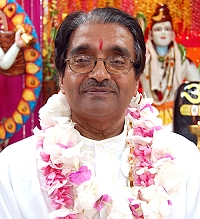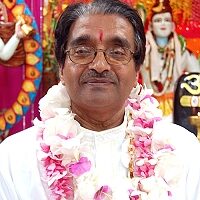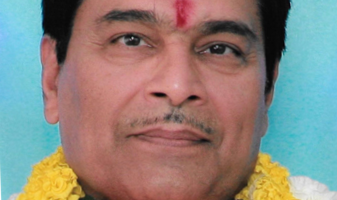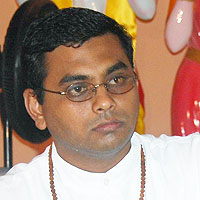From a satsang with Paramacharya of SWAHA, H.H. Pt. Hardeo Persad
Sanaatan Dharma, the eternal way of life, teaches that the Supreme Being manifests in various forms from time to time to uphold righteousness and guide humanity. These sacred manifestations, known as Avataars, are not merely mythological stories but profound philosophical truths that illuminate the nature of Divinity and the purpose of human life.
To understand the concept of Avataar is to delve into the layered understanding of Divinity as presented in our scriptures. Hinduism recognises the Divine in three principal ways: the known Divine, the unknown Divine and the Divine beyond even the unknown.
The Known, the Unknown and the Transcendent Divine
The “known” refers to the first and immediate experiences of Divinity in our lives—Maatri Devo Bhavah, Pitri Devo Bhavah, Aachaarya Devo Bhavah—Mother, Father and Guru are our first gods. They are the tangible expressions of love, guidance and wisdom that shape our very being.
The “unknown” comprises the revered deities—Durga Maa, Lakshmi Maa, Saraswati Maa, Bhagavan Shiva, Hanumanji, Ganeshji and others—whose stories and forms we may know, yet whose true essence remains beyond our full comprehension.
Beyond both known and unknown is the Absolute Reality—Brahm—the formless, infinite substratum of all existence. Brahm is described in the Upanishads as “Neti, Neti” — “Not this, not that”— signifying that the ultimate Truth transcends all definitions and limitations. This Unmanifest Reality, without qualities or form, is called Nirguna Brahm—the Supreme beyond all attributes.
Yet, in infinite compassion, the Unmanifest assumes form and attributes, becoming Saguna Brahm—the Divine with name and qualities—entering the world of time, space and causation. Through this compassionate descent, the Lord engages in the world as Creator, Preserver and Dissolver of all things.
Guna Avataars: The First Divine Manifestations
In the manifested form, Brahm aligns with the three gunas—sattva (purity), rajas (activity) and tamas (inertia)—across the three realms of existence: Bhu (earth), Bhuvah (intermediate) and Swah (celestial). Within the heavenly realm, the Infinite One expresses as Lord Brahma, Vishnu Bhagavan and Shivaji—representing the creative, sustaining and dissolving aspects of Divinity respectively. These are known as the Guna Avataars.
- Brahma embodies rajas, the creative energy.
- Vishnu embodies sattva, the essence of preservation, order and light.
- Shiva embodies tamas, the force of dissolution, necessary for renewal.
These personifications are not separate deities but manifestations of the One Infinite (Ek Brahm), revealing the multifaceted nature of the Divine engaged in the cosmic dance of existence.
Vyuha Avataars: The Transcendental Forms
Our scriptures also describe Vyuha Avataars, transcendental expressions of the Divine. According to the Ramayan and Shrimad Bhagavatam, Shree Raam, Lakshman, Bharat and Shatrughna are considered such manifestations. In Dwaapar Yug, these Divine aspects appeared as Shree Krishna, Balram, Pradyumna and Aniruddh.
Each Avataar plays a purposeful role in the evolution of Dharma, responding to the needs of time and the prayers of devotees.
Leela Avataars: The Divine in Play
The Lord’s incarnations are also described as Leela Avataars—playful, purpose-driven descents into the world. The Shrimad Bhagavatam speaks of 23 such manifestations, with some traditions recognising Lord Buddha as the 24th. These include the ten well-known Dash Avataars, each symbolic of stages in human consciousness and history, from Matsya (the Fish) to Kalki (the future Avataar yet to descend at the end of this Kali Yug).
In the month of May, we are fortunate to observe the sacred Jayantis (birth anniversaries) of three such Avataars:
- Narsingh Jayanti, celebrating the fierce form of Lord Vishnu who appeared to protect His devotee, Prahlad.
- Kurma Jayanti, marking the Divine’s incarnation as a tortoise to support the churning of the ocean by the deities and demons during the Samudra Manthan.
- Buddha Jayanti, honouring the compassionate Avataar who taught the middle path and renunciation of suffering.
Each of these reminds us of the Divine’s commitment to the protection of truth and the upliftment of beings.



